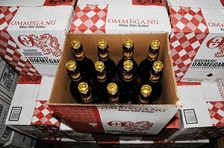Demand for high-proof specialty beer is rising

.floatimg-left-hort { float:left; } .floatimg-left-caption-hort { float:left; margin-bottom:10px; width:300px; margin-right:10px; clear:left;} .floatimg-left-vert { float:left; margin-top:10px; margin-right:15px; width:200px;} .floatimg-left-caption-vert { float:left; margin-right:10px; margin-bottom:10px; font-size: 12px; width:200px;} .floatimg-right-hort { float:right; margin-top:10px; margin-left:10px; margin-bottom:10px; width: 300px;} .floatimg-right-caption-hort { float:left; margin-right:10px; margin-bottom:10px; width: 300px; font-size: 12px; } .floatimg-right-vert { float:right; margin-top:10px; margin-left:10px; margin-bottom:10px; width: 200px;} .floatimg-right-caption-vert { float:left; margin-right:10px; margin-bottom:10px; width: 200px; font-size: 12px; } .floatimgright-sidebar { float:right; margin-top:10px; margin-left:10px; margin-bottom:10px; width: 200px; border-top-style: double; border-top-color: black; border-bottom-style: double; border-bottom-color: black;} .floatimgright-sidebar p { line-height: 115%; text-indent: 10px; } .floatimgright-sidebar h4 { font-variant:small-caps; } .pullquote { float:right; margin-top:10px; margin-left:10px; margin-bottom:10px; width: 150px; background: url(http://www.dmbusinessdaily.com/DAILY/editorial/extras/closequote.gif) no-repeat bottom right !important ; line-height: 150%; font-size: 125%; border-top: 1px solid; border-bottom: 1px solid;} .floatvidleft { float:left; margin-bottom:10px; width:325px; margin-right:10px; clear:left;} .floatvidright { float:right; margin-bottom:10px; width:325px; margin-right:10px; clear:left;}
Consumer demand for high-alcohol-content beer is rising, but getting brews with 6.2 percent or more alcohol by volume onto the shelves of Iowa’s retailers has posed a challenge for at least one vendor.
“You’re finding more and more entries into that category,” said Jason Wallace, a regional manager with Merchant du Vin, a Washington State-based importer of specialty beers.
Wallace said consumers’ tastes for high-proof beers are mounting. But the amount of commerce conducted in Iowa is largely dependent on “how much the state wants to get in the beer business,” he said.
Based in Ankeny, the Iowa Alcoholic Beverages Division (ABD) regulates the distribution of the high-alcohol-content beer, traditionally referred to as malt liquor, said Lynn Walding, the agency’s administrator. The ABD imports the products to its warehouse, then sells them to approximately 630 outlets that are licensed by the state to sell high-proof beer, he said.
Doug Alberhasky, store manager of John’s Grocery Inc., one of the ABD’s Class E license holders in Iowa City, said he has been frustrated by the organization’s administration.
For example, Alberhasky said, in 2008 he placed a special order with Brewery Ommegang, based in Cooperstown, New York.
On Dec. 19, Alberhasky said, the ABD loaded a truck with approximately 60 cases of beer, which included the special order and other high-proof brews regularly stocked by the state. But by the time it arrived at his Iowa City grocery on Monday, due to sub-zero temperatures across the state that weekend, the beer was frozen.
“The citizens of Iowa lost $6,000 that day,” Alberhasky said, “because somebody didn’t realize that beer would freeze.
“I refused it; I wouldn’t let the driver take it off the truck,” he said, adding that he was credited by the state for the ruined shipment.
“We distribute more than $200 million of product every year,” Walding said, which is “not to say that we don’t occasionally make a mistake.” He said the agency has no more and no fewer problems with storage and distribution than a private distributor does.
Last summer, in an effort to address some of the issues revolving around the distribution process, Iowa Sen. Joe Bolkcom (D-Iowa City) called a meeting at John’s Grocery. The Aug. 7 discussion included Alberhasky, Walding, Jim Clayton of the Iowa Alcoholic Beverages Commission and other players in the industry.
Walding said he thinks the meeting was productive, adding that he walked out of the room with a more complete understanding of “issues that can be addressed and better ways of providing services.”
One of those issues includes a lack of refrigeration to cool non-pasteurized beer in the ABD’s 150,000-square-foot warehouse at 1801 Hulsizer Road.
Funds for that upgrade couldn’t be procured due to state budget cuts, Walding said, adding that the ABD hopes to implement the improvement in the near future.
Though the process of procuring high-proof beer can be time-consuming, Wallace said it’s fairly easy for his company to work through it, considering how long Merchant du Vin has been in the business.
But some producers, he said, don’t want to deal with the “lag time” in getting orders processed. “I just don’t think the state is used to the demand right now,” Wallace said.
“I’ve heard both good and bad” things about what measures are being taken to improve the process, Alberhasky said.
“High-proof beer was largely ignored until about two or three years ago,” Walding said.
“The current system allows the high-proof beer to reach out to all corners of the state,” he said. “We actively try to meet the market demand” for the product.
The ABD carries a minimum of 50 different high-proof beers today, compared to zero varieties 18 months ago.








